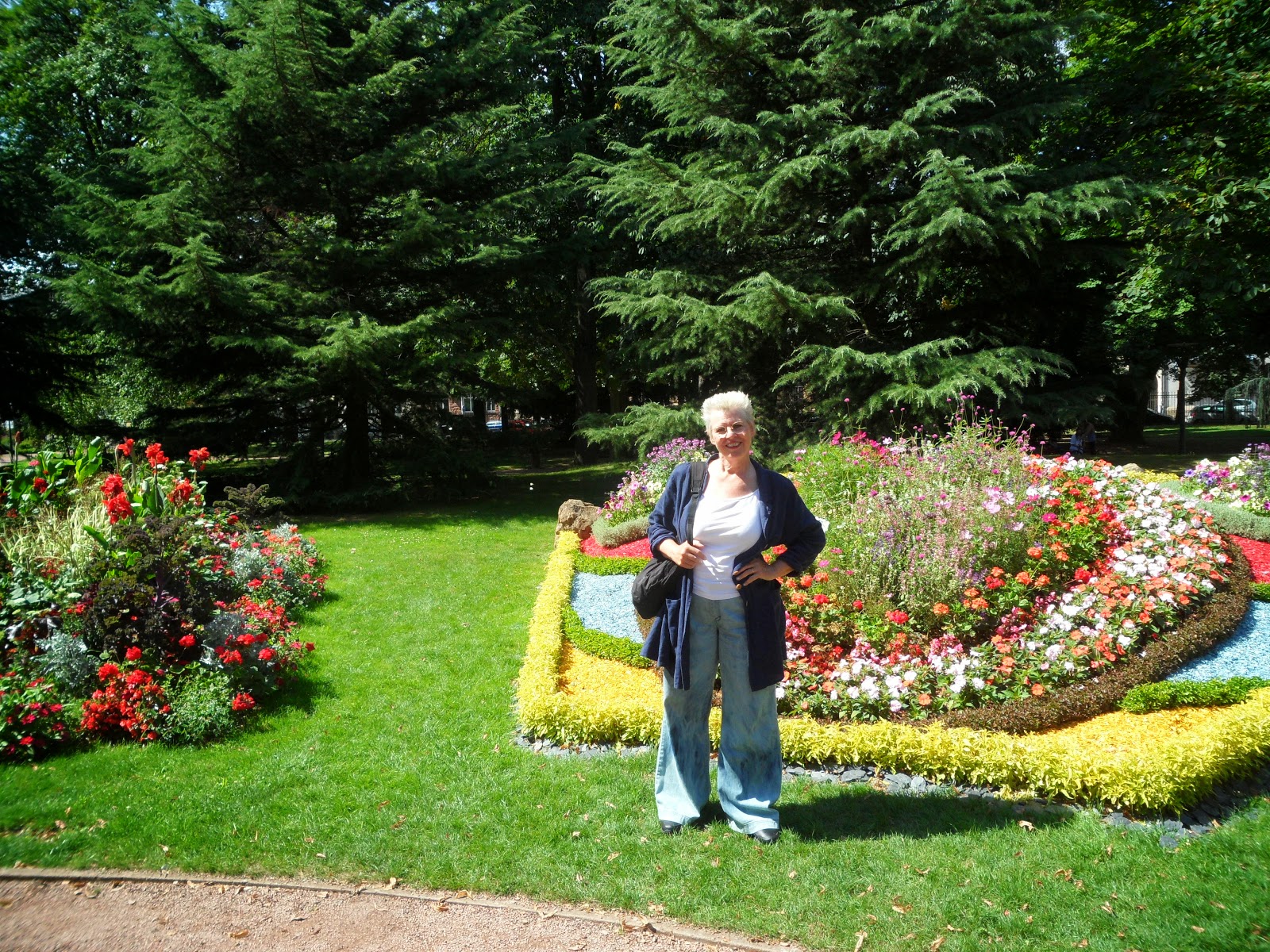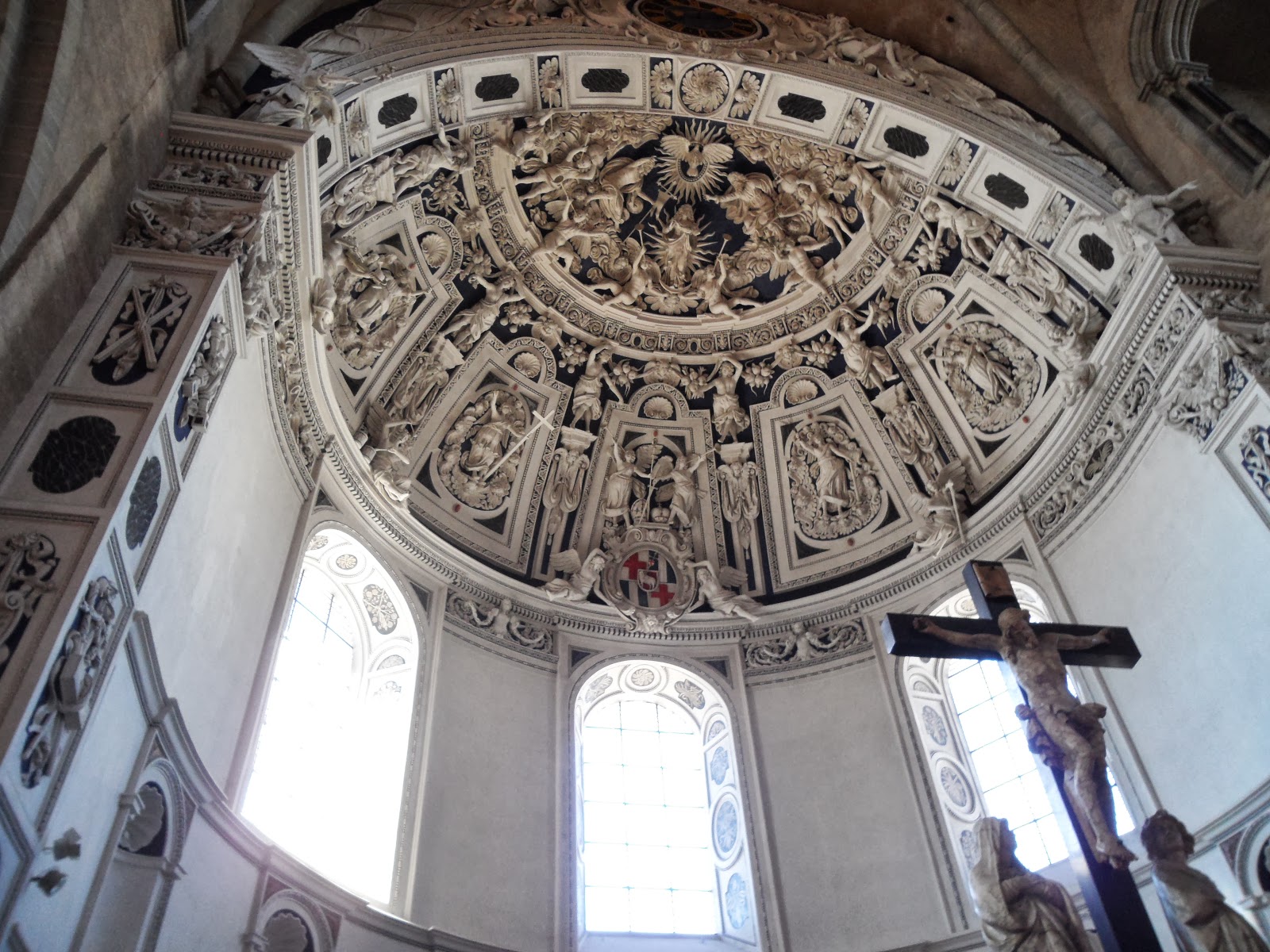Since the ride was so short, we spent the morning touring Metz. Like most French cities, first stop was the Cathedral.
Our next stop was the covered market, not to buy anything, but just to look around.
Then, we set out for Thionville, where we arrived about 2:00 pm.
First stop when we got there? The Cathedral. (What, not another Renaissance masterpiece!)
Then, Kathy and I walked around the walls of Thionville before dinner.
Thionville, Schengen and Remich
Thursday was a longer day, 46 km. The first leg was the trip from Thionville to the medieval village of Rodemack. This time everyone traveled together, so we had a large group.
This section of the trip was dominated by the plumes rising from the 4-reactor nuclear power-plant just north of Metz.
A little further along, we went through a forest and came upon some bunkers left from the Maginot Line, the defensive system built in the 1920s and 1930s to repel a German invasion. However, by the time the invasion arrived, technology had rendered the Maginot Line obsolete. Hitler simply flew over it and drove his tanks around it.
A little further along we found a cemetery with a hexagonal Celtic tower. In the background you can see the nuclear plumes endlessly rising.
At this point, we left the river and began the climb to Rodemack. Some of us had a harder time than others. One of the Frenchmen, Denis, helped his wife up one of the hills by riding alongside her and pushing.
Since we weren't riding along the river, we also rode through some French subdivisions. It doesn't look exactly like Irvine or Costa Mesa, does it?
Finally, right at noon we arrived in the village of Rodemack. This is a very small town, but surprisingly, the tourist office had free WiFi, so Kathy was able to post some pictures.
We ate our lunches in the shade and then everyone took some time to walk around the city walls.
On top of the wall, I tried to take our picture together.
We left around 2:00 pm for Schengen in Luxembourg, right on the border. The ride took only about an hour.
Schengen is where the European Union agreements on open borders were signed. That's why you don't need to go through passport or border control when you go from France to Germany to Luxembourg; all of those countries are part of the Schengen area. (GB is not, however.)
We stayed in Schengen through dinner. After dinner we loaded the bikes on the barge and headed down river to the Luxembourg town of Remich where we docked for the night.
When we reached Remich (about 8:00 pm) Kathy was ready to turn in. (The hill up to Rodemack was really pretty tiring.) I took off on a quick walk around the city. In the park they were having dancing and food, so I bought a large bratwurst and then walked through the city.
As a I was walking through one small lane, all of a sudden I heard singing and saw a crowd of about one hundred people walking towards me carrying candles. I stepped aside and then followed them up through the town to a rock grotto where they had a statue of the Virgin Mary and held some kind of service. I heard later that Thursday was a national holiday in France for the Assumption of Mary.
Trier and Wasserbillig
Friday, our last bike riding day, we set out back on the river up to the German town of Trier. Along the way, the hills were covered with vineyards.
We got to Trier around 2:00 and agreed to meet back at 4:00 for the ride back to the boat. Kathy and I found some shade, since it was very hot, and had our lunch.
Next to where we sat was the Porta Negra, the 2nd century gate into the Roman City. Trier is Germany's oldest city. It was founded by Augustus in 16 BC (although the people of Trier brag that it was inhabited by Celts for 1,300 years before Rome even existed.)
After lunch, across from the Porta Negra, we stopped in to visit an Evangelical church and bookstore on the corner.
Then, we headed to the main square, with all of the tourists and the 90+ degree heat. We were moving pretty slow.
At the beginning of the fourth century, Trier was made the capital of the Western Roman Empire. Emperor Constantine lived here and his mother, Helen, was influential in the development of the Dom or Cathedral.
Inside, its dome is carved instead of painted.
One of the relics that Helen brought back from the Holy Land was the "true robe" of Christ (just like in the book). At the end of the Cathedral is a niche where the robe is stored in a silver trunk. Just like the shroud of Turin, they only bring it out on special occasions.
In the Gothic church next door to the Cathedral, a wedding was taking place. Because it was so hot, all the tourists were lined up in the shade, waiting for the couple to make their getaway in a horse-drawn carriage, just as if it were a regularly scheduled "event".
Further on in the tow in the Basilica. This is the largest intact Roman structure outside of Rome itself. Even though it is now a Basilica, originally it was Constantine's throne room. The last Roman Emperor moved out in 395 AD, and, by the 12th century, Catholic church took it over. In 1856, four hundred years after the Reformation, the Lutheran church took it over. Today, it is the leading Protestant church in Trier.
By 4:00 we were exhausted by the head and ready to head home.
Unfortunately this time we were riding against the wind. That cooled us down somewhat, but it still took us about 2 hours to ride the 15 km back to Wasserbillig, Luxembourg, where the ship was docked.
After dinner, we sat on the dock, enjoying the calm and just resting. Tomorrow, we'd leave the boat and head for Luxembourg City.









































No comments:
Post a Comment
Unless you sign into a Google Account, you'll be anonymous. In that case, we'd love to know who you are. You can close your message with your name.